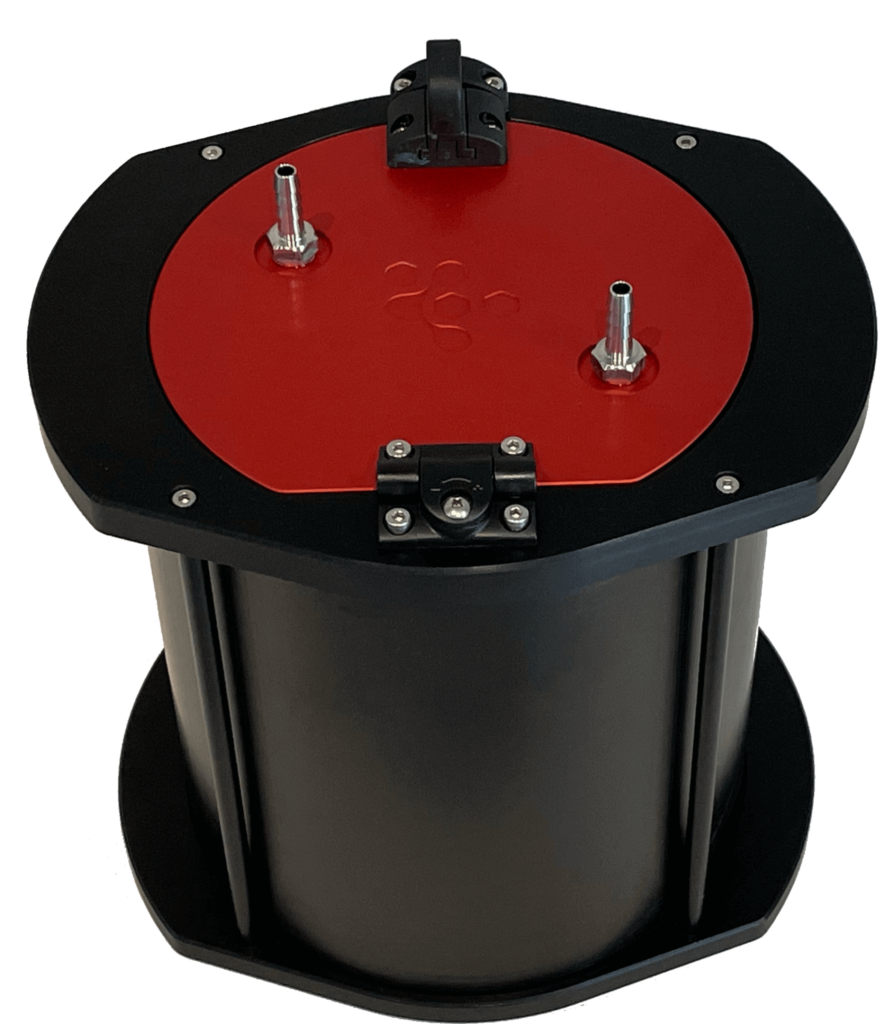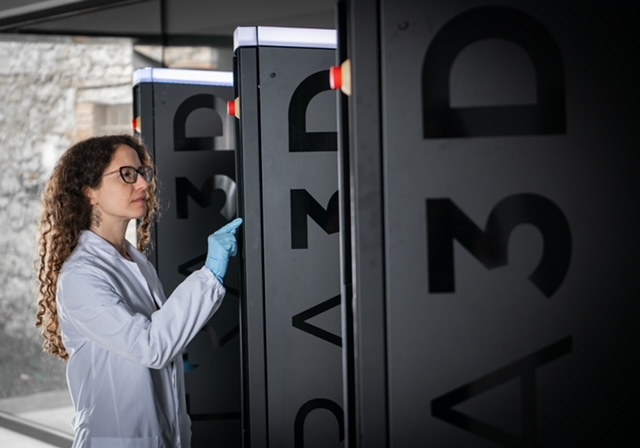While the world of vat photopolymerization has undergone some serious evolution over the past decade, it’s likely that we’re only seeing the tip of the iceberg in terms of where the segment is headed. There is still plenty of room for innovation in terms of cost, throughput, quality, materials and more.
One firm that is attempting to combine the scale of digital light processing (DLP) with the detail of stereolithography (SLA) is Axtra3D, Inc., whose Hybrid PhotoSynthesis (HPS) technology could be a game-changer for the sector. To learn more, we spoke to Chief Revenue Officer Paul Spoliansky.
Spoliansky’s impressive career trajectory included seven years at 3D Systems, followed by stints at Carbon and Stratasys. During the six-and-a-half years he spent at this last company, he began in regional sales before specializing on stereolithography. In commercializing the short-lived V650 Flex solution which led to the acquisition of RPS and their Neo Printers by Stratasys and aiding in the Origin on-boarding, he became the company’s “vat polymerization guy.”
Combining the Best of SLA and DLP
His reputation eventually led him to Axtra3D, co-founded by COO Praveen Tummala, a former Senior Materials Engineer at 3D Systems. He was instantly drawn to the company’s HPS technology, which uses a DLP engine to cure the internal cross sections and a laser to draw the borders.
HPS technology brings a number of advancements to the 3D printing process. It surpasses the print speed of SLA printers, matching the highest-speed DLP & LCD systems, and offers an industrial-grade build area of up to 17.3 liters. Surface quality is also enhanced with HPS, eliminating the need for post-print refinishing and ensuring a superior surface without any aliasing or stair-stepping. This technology allows for continuous printing with nearly isotropic part performance and leverages the accuracy and fine feature capabilities of a laser, supercharged with DLP capabilities.
Intelli-Cartridge
Another development from the company is less well-known in the industry: Axtra3D’s Intelli-Cartridge system. The Intelli-Cartridge is designed to simplify and automate the 3D printing process by actively managing resin within the printer. It dispenses material to the vat, collects return material, and offers a series of functionalities including agitation, heating, and filtering.
 The Intelli-Cartridge
The Intelli-CartridgeThe system increases in-build resin capacity (8 liters total), eliminates manual top filling, and helps to reduce waste and mess by extracting excess resin and filtering it before returning to the cartridge. The Intelli-Cartridge is equipped with auto-mix capabilities, allowing programmed stirring cycles to ensure consistent filler levels in each layer, and IR heaters to control material temperature. These features position the Intelli-Cartridge as a valuable tool for high volume builds and production runs, contributing to the advancement of photopolymer technology.
“Typically, with vat photopolymerization, you have to remove the resin vat from the machine, take it to a safe area and squeegee the resin out through a filter back into the bottle. In that process, you’re wasting a lot of time and there’s a lot of risk for resin contamination on gloves and getting resin everywhere,” Spoliansky said. “With the Intelli-Cartridge system, the whole idea is to mitigate that and give users another option. It’s essentially a vacuum, where you fill one side and vacuum and remove resin on the other side, with two peristaltic pumps driving the process.”
TruLayer Technology
Axtra3D also developed what the firm refers to as “TruLayer Technology,” employing three sensors on the glass plate sliding underneath the printer’s membrane. This technology eliminates unnecessary wait times between layers, doubling the speed compared to competitors without losing accuracy. It enables rapid detachment of the active print layer from the vat membrane, removing limitations to the cross-sections being printed, even those that are large and bulky. Additionally, the technology features a non-degenerative vat membrane, enhancing durability, and it also has the ability to print with highly viscous resins.
“We’re able to eliminate the standard wait times and only wait as long as we need to wait, because we actually have live feedback from those sensors,” Spoliansky said. “When we turn that technology on, we started seeing that we’re about double the speed of our biggest competitor in the space.”
 The Lumia X1 with doors open.
The Lumia X1 with doors open.Applications for HPS
All of the aforementioned features are available on Axtra3D’s flagship Lumia X1 printer, manufactured in Italy. Meanwhile, the startup also developed the budget friendly Revox X1, which is essentially the same as the Lumia, but without HPS. It still features TruLayer and Intelli-Cartridge technologies but relies solely on a DLP projector. However, the Revox can be upgraded to the Lumia in the field.
Spoliansky noted that a key factor for success in the industry is having a strong application focus. Axtra3D is collaborating with some of the largest dental labs in the U.S. Its printers are designed to optimize various dental applications.
“For dental labs, increased speed means a better return on investment. By being twice as fast as our biggest competitor, it means that, with one piece of equipment, a dental lab can print double the models within a day, while keeping the same accuracy. And we’re working on shaving off another 25 percent of the print time there, as well,” Spoliansky said.
The company is also exploring such use cases as connectors with low to medium volume and high complexity. Axtra3D’s Lumia X one offers a cost-effective alternative, especially compared to Carbon’s subscription model, creating a more flexible operational cost model. Axtra3D also sees a lot of traction in tooling.
“Surface quality is really important for tooling. We partnered with BASF and are a reseller of BASF resin. We’re using their new 3280 material, which is 65% ceramic filled by volume. 3280 runs incredibly well on our system. We have great process control with it. And it’s really fast too. We build these molds in a vertical orientation, which is unusual because they’re usually printed for the shortest build time. Because our machine is so fast, we’re even able to print 25-micron layers in a vertical orientation.”
Axtra3D’s Market Approach
Availability for the printers was announced in May, with the first shipment of systems for the U.S. market just now arriving from Europe. Having printed more than 50 parts for prospective customers, Axtra3D has received an enthusiastic response to the high surface finish of prints made with HPS.
While the startup has developed a number of innovative features, Axtra3D has entered the market at one of the more challenging times in the AM market’s history. Nonetheless, Axtra3D signed its first U.S. channel partner, Nota3D, which is also a 3D Systems reseller.
Because the suite of features on the Lumia X1 is so unique, it’s hard not to imagine success for Axtra3D. As it ramps up its market entry, the company will likely trigger competitors to develop their own versions of the various features available on the machine. In turn, the vat photopolymerization space will benefit overall.
Subscribe to Our Email Newsletter
Stay up-to-date on all the latest news from the 3D printing industry and receive information and offers from third party vendors.
You May Also Like
Further Understanding of 3D Printing Design at ADDITIV Design World
ADDITIV is back once again! This time, the virtual platform for additive manufacturing will be holding the first-ever edition of ADDITIV Design World on May 23rd from 9:00 AM –...
3D Printer Maker EVO-tech Reborn as NEVO3D — Once More With Feeling
EVO-tech was a 3D printing service and original equipment manufacturer established in 2013 and based in Schörfling am Attersee, Austria. The company produced high-quality material extrusion systems featuring linear bearings,...
3D Systems Brings 3D Printed PEEK Cranial Implant to the U.S. with FDA Clearance
For more than 10 years, 3D Systems (NYSE:DDD) has worked hand-in-hand with surgeons to plan over 150,000 patient-specific cases, and develop more than two million instruments and implants from its...
CDFAM Returns to Berlin for Second Annual Symposium
The second CDFAM Computational Design Symposium is scheduled for May 7-8, 2024, in Berlin, and will convene leading experts in computational design across all scales. Building upon the first event...

































